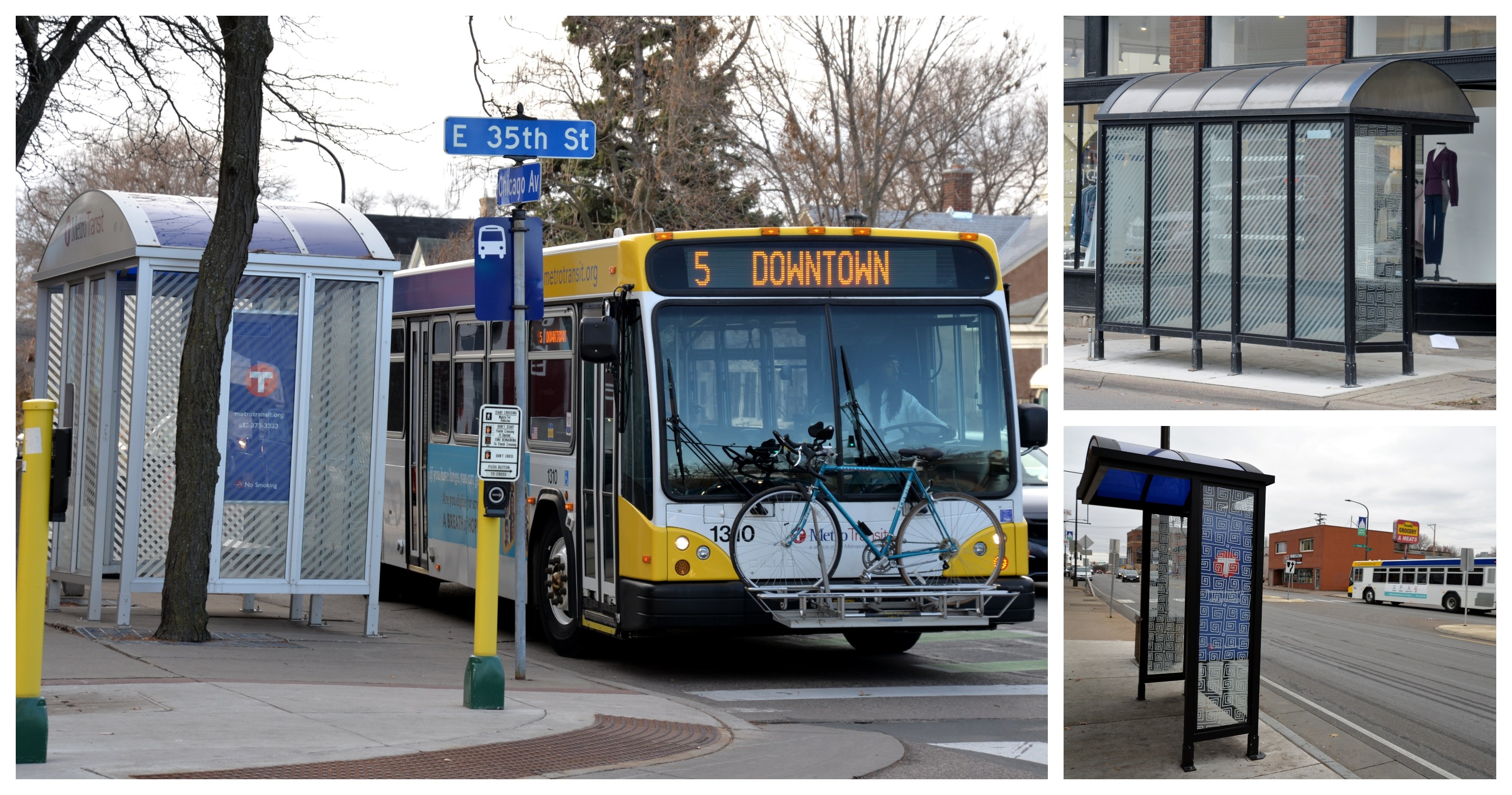 New shelters were installed at several locations in 2019, including at, clockwise from left: 35th and Chicago, in Minneapolis, Dale Street and Selby Avenue, in St. Paul; and on Rice Street and Charles Avenue, in St. Paul.
New shelters were installed at several locations in 2019, including at, clockwise from left: 35th and Chicago, in Minneapolis, Dale Street and Selby Avenue, in St. Paul; and on Rice Street and Charles Avenue, in St. Paul.
Until recently, Route 5 customers waiting to catch the bus outside the Pillsbury House and Theatre on Chicago Avenue didn’t have any protection from the elements. Now they do.
The boarding location was one of two-dozen spots where Metro Transit added or improved shelters in 2019 as part of its ongoing Better Bus Stops program.
Since 2014, shelters have been installed at 135 priority bus stops across the region. Heat and light have also been added to dozens of new and existing shelters.
While the agency is poised to reach its goal of installing 150 new shelters through the Better Bus Stops program, which was supported by a federal grant, shelter improvements will continue well into the future.
“This isn’t one and done – Better Bus Stops has grown from a project to a program that gives continuous attention to the customer experience at the bus stop,” said Director of Engineering & Facilities Marilyn Porter.
In 2020, new shelters are expected to be added in downtown St. Paul, along the Route 63 corridor, complementing planned service improvements, and at several other locations.
Up to 50 of the region’s oldest shelters will also be replaced in the coming years. Accessibility improvements, including concrete pads, will be made at dozens of locations across the region.
Updated shelter guidelines, developed with community input, are guiding shelter improvements. Road construction and service plans also influence shelter planning.
In addition to the new and improved shelters, displays with schedule and route information were recently redesigned based on customer feedback. Those updates followed a systemwide rollout of new bus stop signs with route numbers and other transit information.